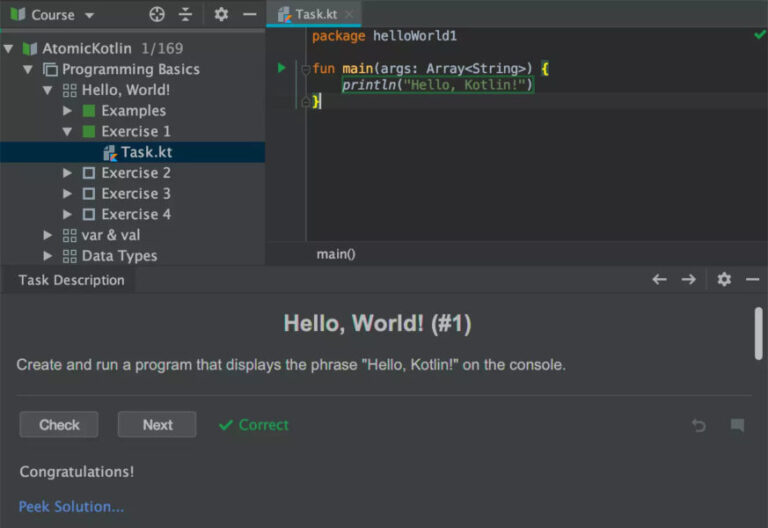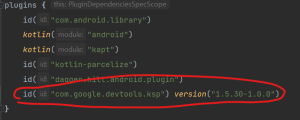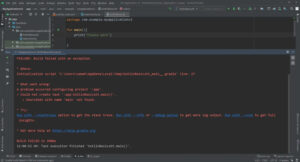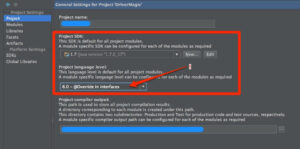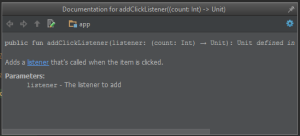Kotlin is a popular programming language that has been gaining popularity among developers in recent years. One of the most useful and interesting features of Kotlin is the “by” keyword. The “by” keyword is used in a variety of contexts in Kotlin, and it provides a powerful tool for simplifying and optimizing your code. In this blog post, we will explore the various uses of the “by” keyword in Kotlin and how it can be used to improve your code.
What is the “by” keyword in Kotlin?
The “by” keyword is a versatile keyword in Kotlin that is used in a variety of contexts. Essentially, “by” is a way of delegating some of the work of a class or function to another object or function. This can help to simplify code and make it more readable, while also providing some powerful optimizations.
One of the most common uses of the “by” keyword is in creating delegate classes. A delegate class is a class that handles some of the work of another class, allowing the original class to focus on other tasks. For example, suppose you have a class that needs to handle some database operations. Instead of writing all the database code directly into the class, you could create a delegate class that handles the database work and then use the “by” keyword to delegate that work to the delegate class.
Using “by” to create delegate classes
To create a delegate class in Kotlin, you first need to define the interface that the delegate will implement. This interface defines the methods and properties that the delegate will handle. For example, suppose you want to create a delegate class that handles database operations for a given class. You might define an interface like this:
interface DatabaseDelegate {
fun save(data: String)
fun load(): String
}Next, you would create a class that implements this interface. This class will handle the actual database operations. For example:
class DatabaseHandler : DatabaseDelegate {
override fun save(data: String) {
// Handle saving the data to the database
}
override fun load(): String {
// Handle loading the data from the database
return "Some data"
}
}
Now that you have your delegate class, you can use it to delegate work from other classes. To do this, you use the “by” keyword. Here’s an example:
class MyClass(delegate: DatabaseDelegate) : DatabaseDelegate by delegate {
// MyClass implementation goes here
}
In this example, the “MyClass” class implements the “DatabaseDelegate” interface using the “by” keyword to delegate work to the “delegate” object. Now, when you call the “save” or “load” methods on the “MyClass” object, the code will be automatically delegated to the “delegate” object.
Using “by” to implement properties
Another way to use the “by” keyword in Kotlin is to implement properties. In this context, the “by” keyword is used to delegate the implementation of a property to another object. This can be useful in cases where you have a complex property that requires a lot of code to implement. Here’s an example:
class LazyProperty {
val lazyValue: String by lazy {
// Calculate the value of the property here
"Some lazy value"
}
}
In this example, the “LazyProperty” class defines a property called “lazyValue”. The implementation of this property is delegated to the “lazy” function, which calculates the value of the property lazily. When you access the “lazyValue” property for the first time, the “lazy” function is called to calculate the value. Subsequent accesses to the property will return the cached value, avoiding the need to recalculate the value every time the property is accessed. The “by” keyword here allows us to delegate the implementation of this property to the “lazy” function, which handles the caching of the calculated value for us.
Subsequent accesses to the property will return the cached value, avoiding the need to recalculate the value every time the property is accessed. The “by” keyword here allows us to delegate the implementation of this property to the “lazy” function, which handles the caching of the calculated value for us.
Using “by” with Observable properties
The “by” keyword can also be used to implement observable properties in Kotlin. An observable property is a property that can be observed for changes, and a callback is invoked whenever the property changes. Here’s an example:
import kotlin.properties.Delegates
class User {
var name: String by Delegates.observable("No Name") {
prop, old, new ->
println("$old -> $new")
}
}
In this example, the “User” class defines an observable property called “name”. The implementation of this property is delegated to the “Delegates.observable” function, which allows us to observe changes to the property. Whenever the “name” property is set, the callback function is invoked, and we can print out the old and new values of the property.
Conclusion
The “by” keyword is a versatile and powerful tool in Kotlin that can be used in a variety of contexts. By delegating some of the work of a class or function to another object or function, we can simplify our code, make it more readable, and optimize it for performance. Whether you’re creating delegate classes, implementing properties, or working with observable properties, the “by” keyword is an essential tool in your Kotlin programming toolbox.

